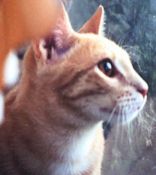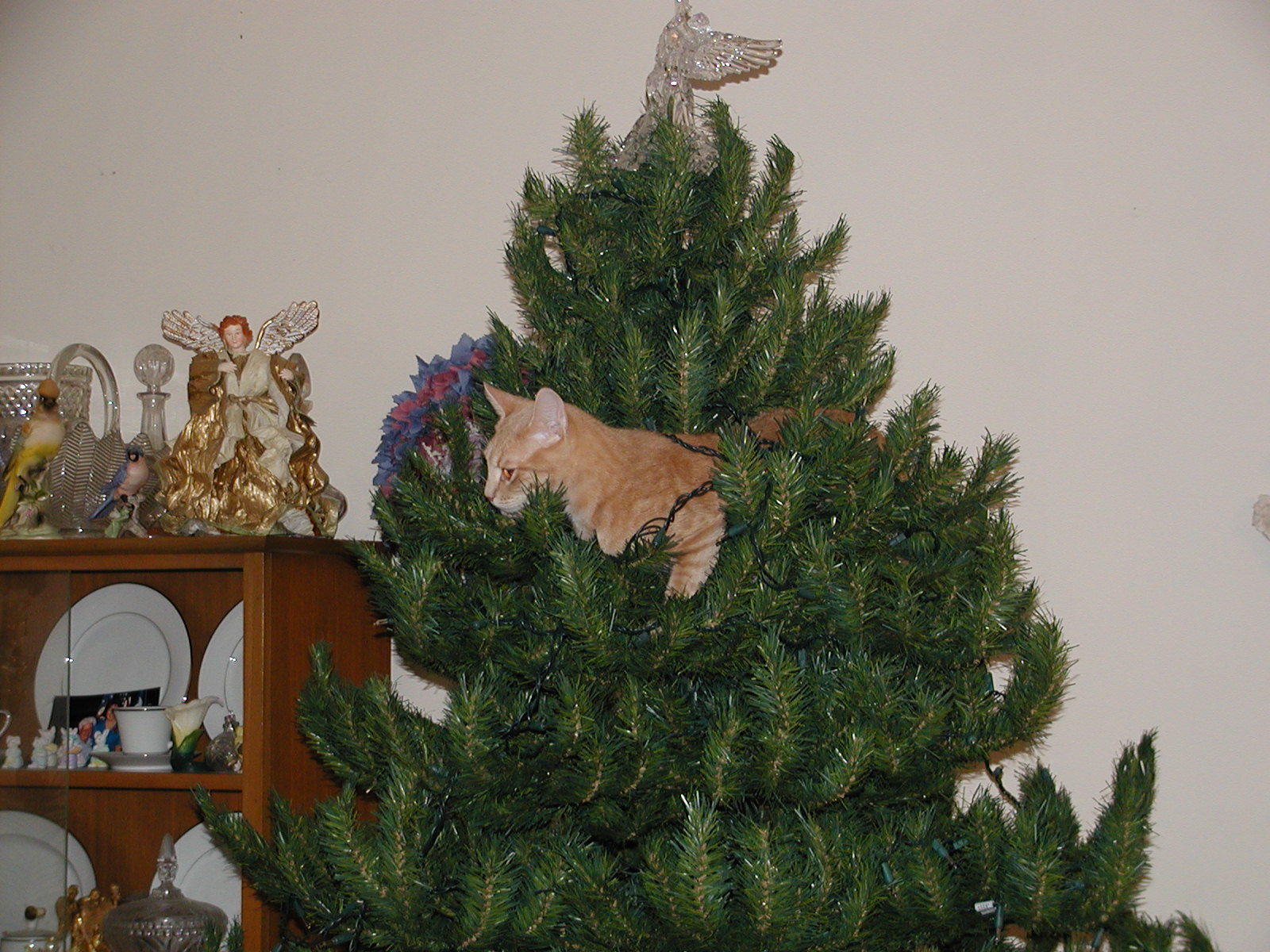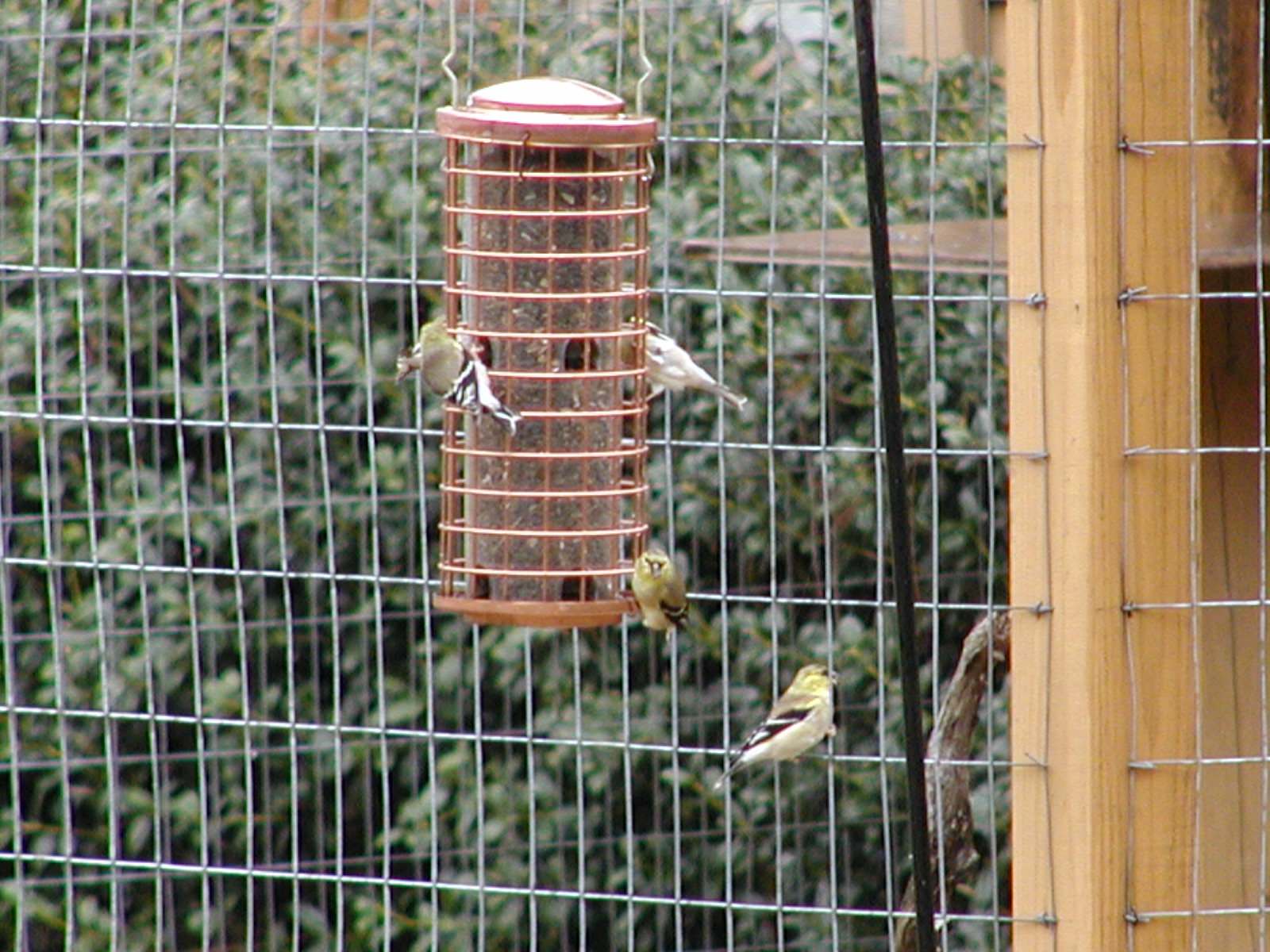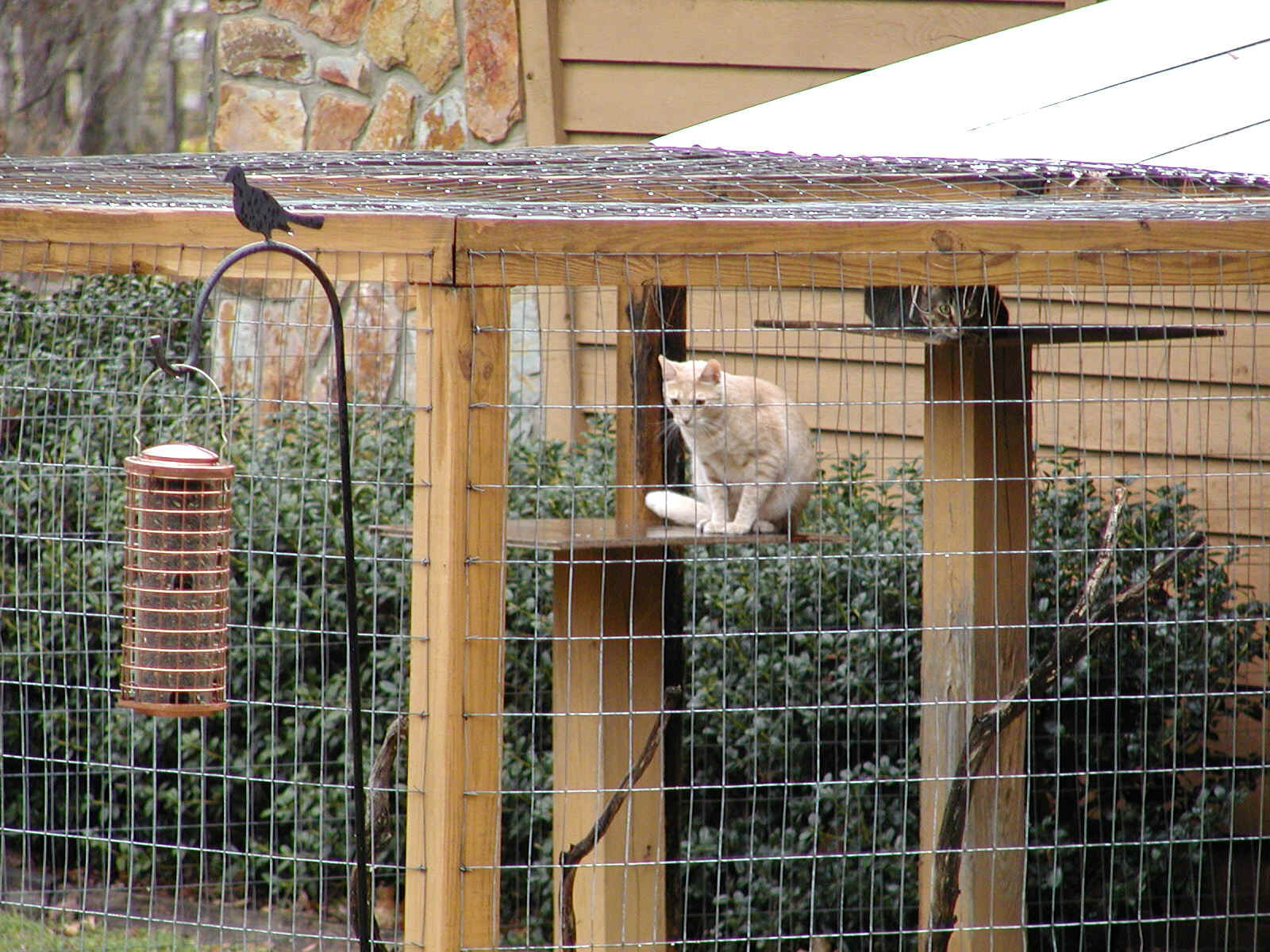

go back to main page go to Harry's Home BG Testing site
Peanut received a steroid shot for his flea allergies on 4/2/01 and started to display diabetic symptoms sometime after that. After noticing weight loss and urination outside the litterbox, Peanut's former owner took him to the vet who diagnosed Diabetes 6/8/01 and put him on an antibiotic for an unspecified infection. Peanut had gone down from 9 lbs to 6 lbs and was ravenously hungry and excessively thirsty (Polydipsia PD), and urinating frequently, a large volume (Polyuria PU). He was quite dehydrated and lethargic when we picked him up 6/14/01, but curious about the new surroundings. Peanut started squinting his left eye after a few days and that lasted for ~10 days, despite antibiotic eye ointment for 1 week (mild URI?). Peanut had been treated for tapeworms at least 3x and was found to have them again on 6/15/01 (treated with Cestex pill).
Healthy at 9 lbs Undiagnosed/untreated Diabetic for ~2-3 mo, 6 lbs

Peanut
the 12 lb. Christmas Ornament, 2001

Peanut hunting goldfinches 3/02


Peanut started on twice a day shots of Humulin Lente insulin on 6/14/01 and showed improvement within days, becoming a lively playful kitten again as the insulin started to help lower his blood glucose (BG) levels. How much food he eats, of what kind (dry is higher in carbohydrates than canned), and when he eats it in relation to the amount and action of the insulin given all affect the BG level. Peanut remains very food-oriented, gobbling down 1/2-3/4 of 5 oz can of cat food, then rushing to check if the other cats left any behind. When 1/2 c. dry food was left out, he usually ate it all within the first hour. He seemed to get much higher BGs from dry food, so we are serving mostly canned cat food now.
We switched to Humulin Ultralente on 6/25/01, seeking longer duration and it seems to be helping. As of 7/2/01, Peanut has regained weight to 8 1/4 lbs, seems healthy, and BGs have been in the 200's a few times. Occasional lower preshots (<250, once only 163) and a reduced insulin dose have been followed by even higher BGs at the next preshot (either not enough insulin or rebound).
About 50% of cats with steroid-induced diabetes go on a honeymoon (no longer diabetic, don't need insulin). This has occurred in as soon as 3 mo and as late as 18 mo of diabetes treatment and may last a few days to months to years. If Peanut's pancreas starts to recover from the steroid-induced diabetes, we will need to be alert -- lower pre-shot BG numbers will need a reduced insulin dose to prevent hypoglycemia. During recovery, BGs may be very erratic, fluctuating from day to day or may simply drop into the normal range for a non-diabetic and stay there. Home BG testing with a glucometer like human diabetics use, is an important tool to monitor BG levels. It is especially helpful when you have a good chance of spontaneous recovery, as with a steroid-induced diabetic.
We created Harry's Home Blood Glucose Testing Site when our first cat became diabetic, with pictures of how to do it and lots of information about meters and supplies.
7/25/01 update --Peanut is doing great on Humulin Ultralente 3-3.5 u bid and Purina DM dry food. He is up to 9 1/2 lbs and has a fairly flat curve with about 100 pt drop. After a month on insulin and a week on the Purina DM dry, when he reached ~9 lbs, his appetite decreased from frantic/ravenous vacuum cleaner mode to a more normal level. He still eats most of a (1/2 c.) double serving of DM dry in 30 min., but now he leaves a teaspoon or 2 for later and doesn't stick his face in the other cats' plates while they are still eating. He has a little fat under his skin and shots don't make him jump anymore. When his BGs go above 400, his PU/PD increases a lot. He has been mid-300's pre-shot lately. He is itchy and scratches a lot (bumps under chin on neck), so we started adding Fish oil to a tsp. of canned tuna 7/16/01 bid (no more steroids for Peanut!). The Essential Fatty Acids should help reduce itching and inflammation in about a month, he already gets Advantage to help keep fleas away.
10/3/01 update -- Pancreas recovery started in August
Peanut started showing signs of pancreas recovery in early August, with pre-shots occasionally in the "normal for a non-diabetic" 60-70 BG range, and now almost always has pre-shots below 180, with many around 120, and some in the 60-70s. At the same time, his weight has increased to 12 lbs and at 1 year-3 mo., he looks like a full-grown cat. We don't want him to get any heavier, so we have started to reduce the amount of food he gets from 1/2 c. dry Purina DM, twice a day, to 3/8 c, twice a day. We found that the rate of dry DM food absorption closely matched the absorption of Humulin Ultralente insulin, which makes his curve fairly flat. He still gets 1/2 of 4 mg Chlortrimetron for skin allergy itchiness, twice a day, as well as Fish oil or Evening Primrose oil added to his food. The essential fatty acids from the oils have helped his coat grow in longer, thicker, and softer. With preshot BGs below 200, we no longer see PU/PD and find Peanut to be a delightful addition to the family.
10/9/01 update
Peanut had most pre-shots under 100 in the past week. Today is day 3 of no insulin at all, with BGs ~88. We like it. He eats Purina DM dry and loves it (tried to bury the canned DM, though). Peanut went from 3.5+ u of Humulin Ultralente, bid to no insulin in an erratic but gradual decline over the past month. We tested pre-shot everytime and decreased the dose accordingly. Peanut is young, 1 1/4 yrs and active and has gone from 6 lbs 6/8 at diagnosis to 12.5 lbs
(we are cutting back on his meals now).
10/15/01 update Peanut was allergic to a vaccine
Peanut went to the vet for his annual checkup and vaccinations on Sat. 10/13 celebrating 1 week off of insulin. He got far more than he deserved. He had to have his anal glands expressed and then had a bad reaction to one of the vaccines he received and vomited in the car as we started to leave the parking lot. He was taken back in and was treated with shots of Benedryl, then Reglan, and continued to vomit and have diarrhea while being observed for another 3 hrs (we took him home when the office closed). Luckily, his vital signs were good and he didn't get hives or swelling, which are more severe reactions. Since he got Rabies, FVRCP, and Feline Leukemia vaccines, we don't know which is the culprit, but the vet said Feline Leukemia is most likely.
Peanut turned 1 y/o in July and although he had had all 3 vaccines as a kitten, these were his first as an adult cat. The 2nd exposure or 3rd exposure is the most common time for an allergic reaction to occur. We had to confine him in a carrier for about 24 hrs because movement triggered more vomiting and he wouldn't stay still. He continued to need oral Reglan (Metoclopramide HCL)through Sunday and Monday for nausea and was given Pedialyte by syringe (5 cc/hr) to counteract the dehydration until he would drink and eat on his own.
He was fully recovered by Wednesday morning.
10/22/01 No longer Diabetic
Peanut has not needed any insulin for over 2 weeks (since 10/6/01), his BG
values have stayed in the 60-80 mg/dL range, normal for a non-diabetic. We
continue to feed him the Purina DM dry food for diabetics, just 1/4 c., twice a
day. He is at 12 lbs, a good weight for his adult body size. As of
3/2/02 Peanut remains insulin-free.
last updated 3/2/02
go back to main page http://plaza.ufl.edu/johnsonn/
go to Harry's Home BG Testing site http://www.sugarcats.net/sites/harry/